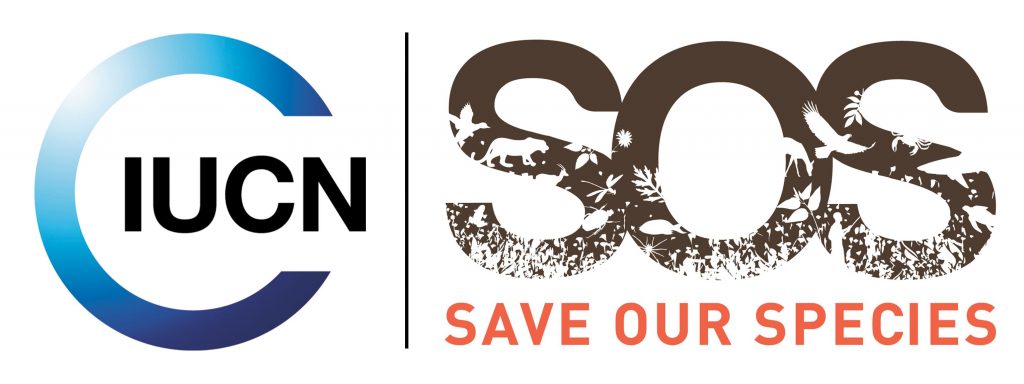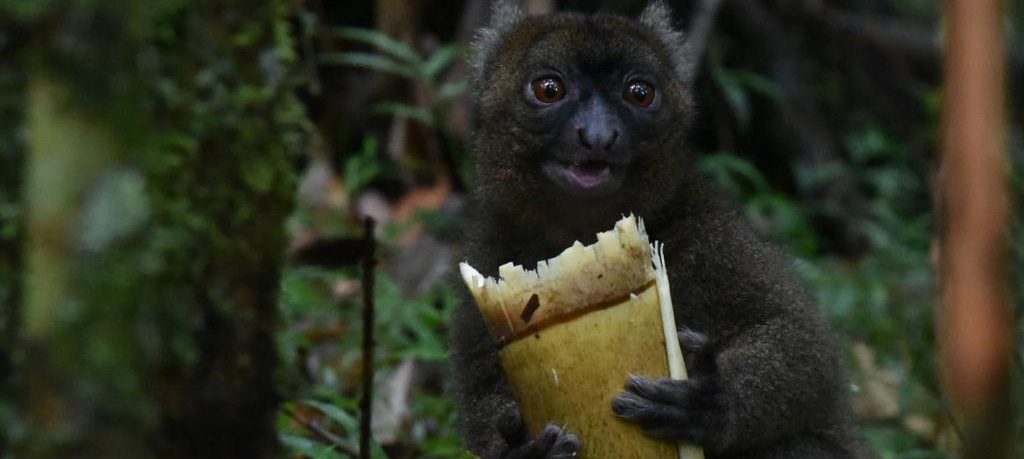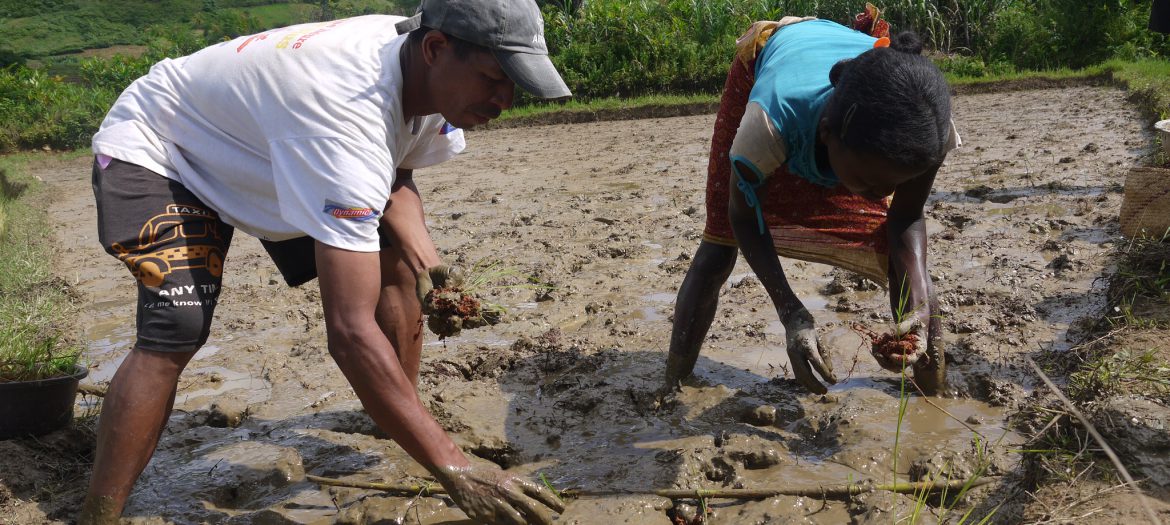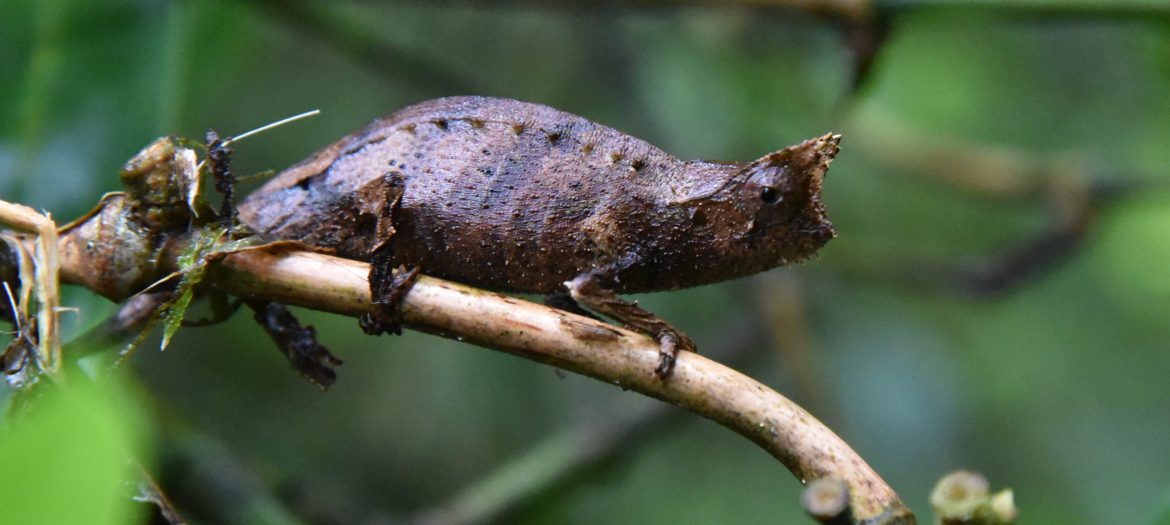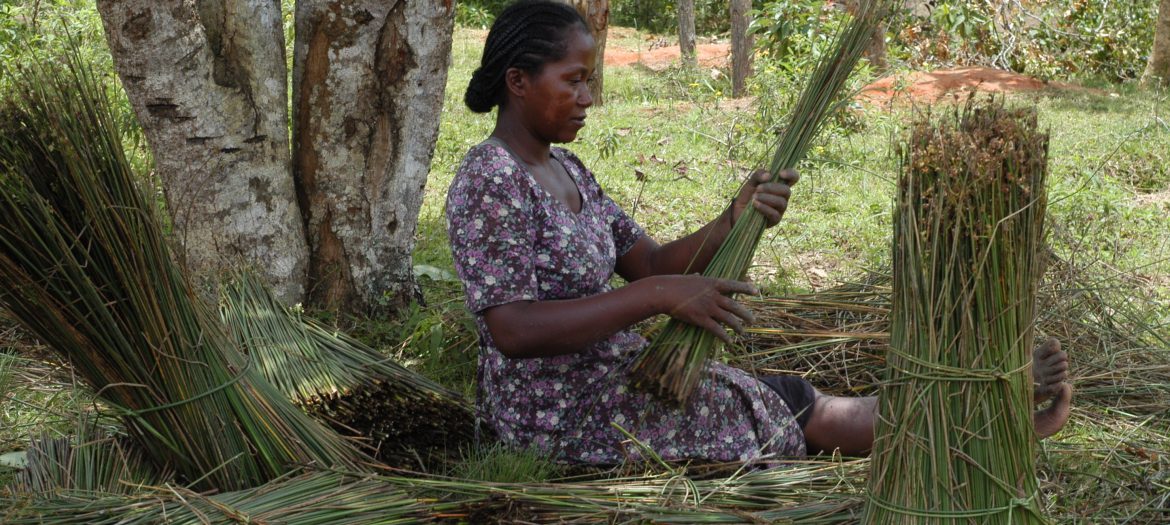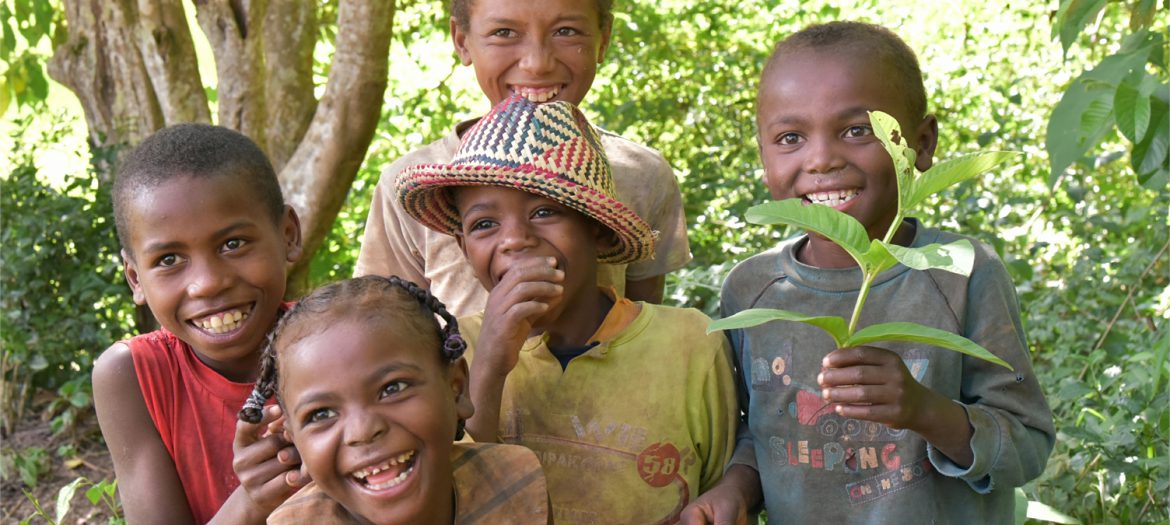Funded by IUCN Save Our Species
This project will empower COFAV communities to conserve their lemurs through a multifaceted approach that builds local capacity, addresses livelihoods concerns and promotes stakeholder collaboration and communication. Whilst focusing on Hapalemur aureus, it will enable the gathering of data on all primates in the previously unresearched forests of Ambohimahamasina and three neighbouring areas. Data collection on lemurs will be conducted by local stakeholders, with results shared through the Youth Centre, schools, radio shows, lemur festivals and social media. Forest inhabitants will become lemur monitors to ensure project sustainability, and 12 awareness-raising signs encouraging lemur conservation will be erected along Ambohimahamasina’s 3 main forest footpaths crossing to the eastern side of the forest ‘corridor’. Numerous awareness-raising initiatives will be combined with promotion of alternative sources of income and protein including small-scale fish-farming and chicken-rearing, and the capacity-building of Community Forest Management associations to reduce lemur poaching and habitat loss. Support will be given to forest inhabitants to make their lifestyles more sustainable. Agricultural production on deforested land will be boosted through training on improved techniques, with 6 community tree nurseries operational to provide saplings for agroforestry, reforestation and forest restoration to meet both human and lemur needs.
Threatened Species Targeted:
Golden Bamboo Lemur (Hapalemur aureus) (Critically Endangered C2a(i))
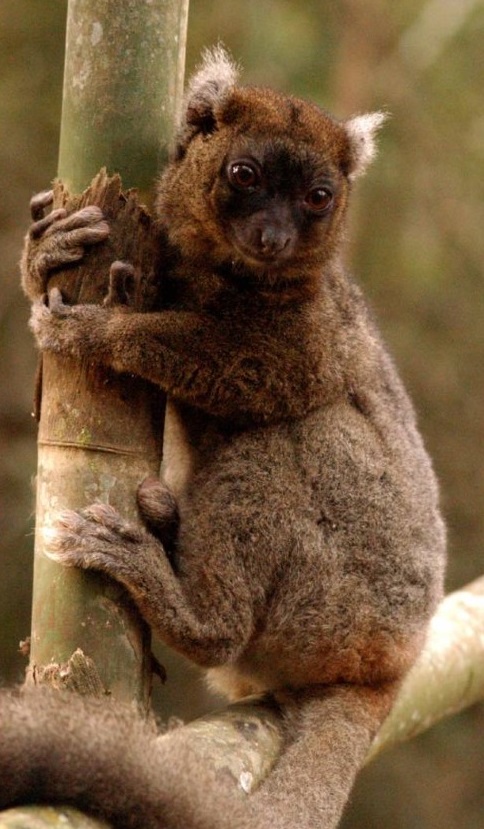
Other threatened species benefitting from the project:
Southern Ruffed Lemur (Varecia variegata ssp. editorum) (Critically Endangered A2cd)
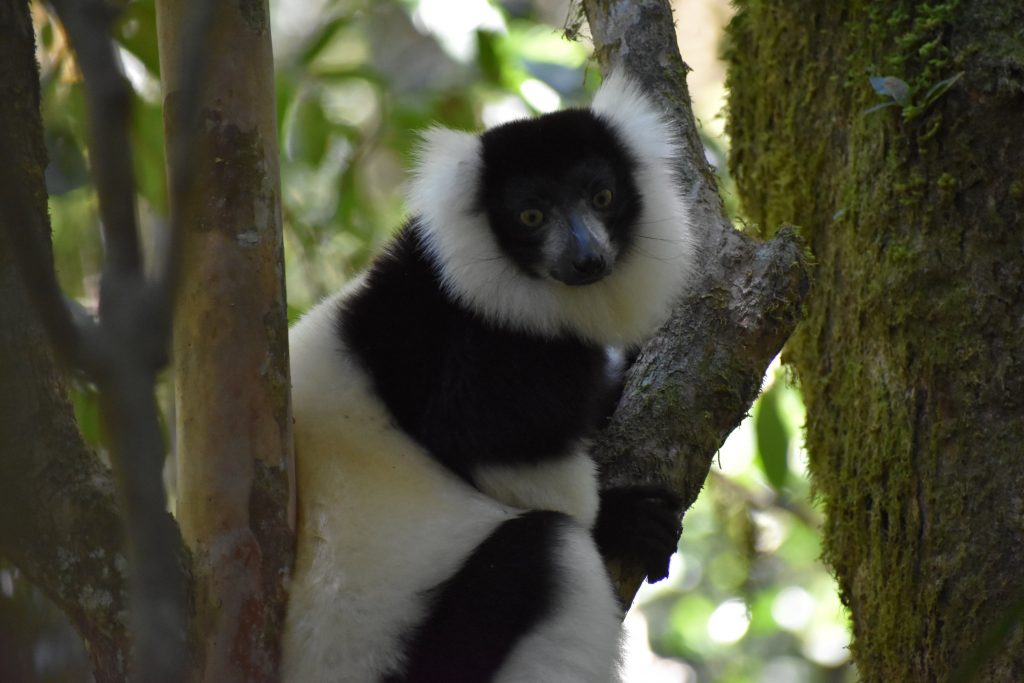
Milne-Edward’s Sifaka (Propithecus edwardsi) (Endangered A2cd+3cd+4cd)
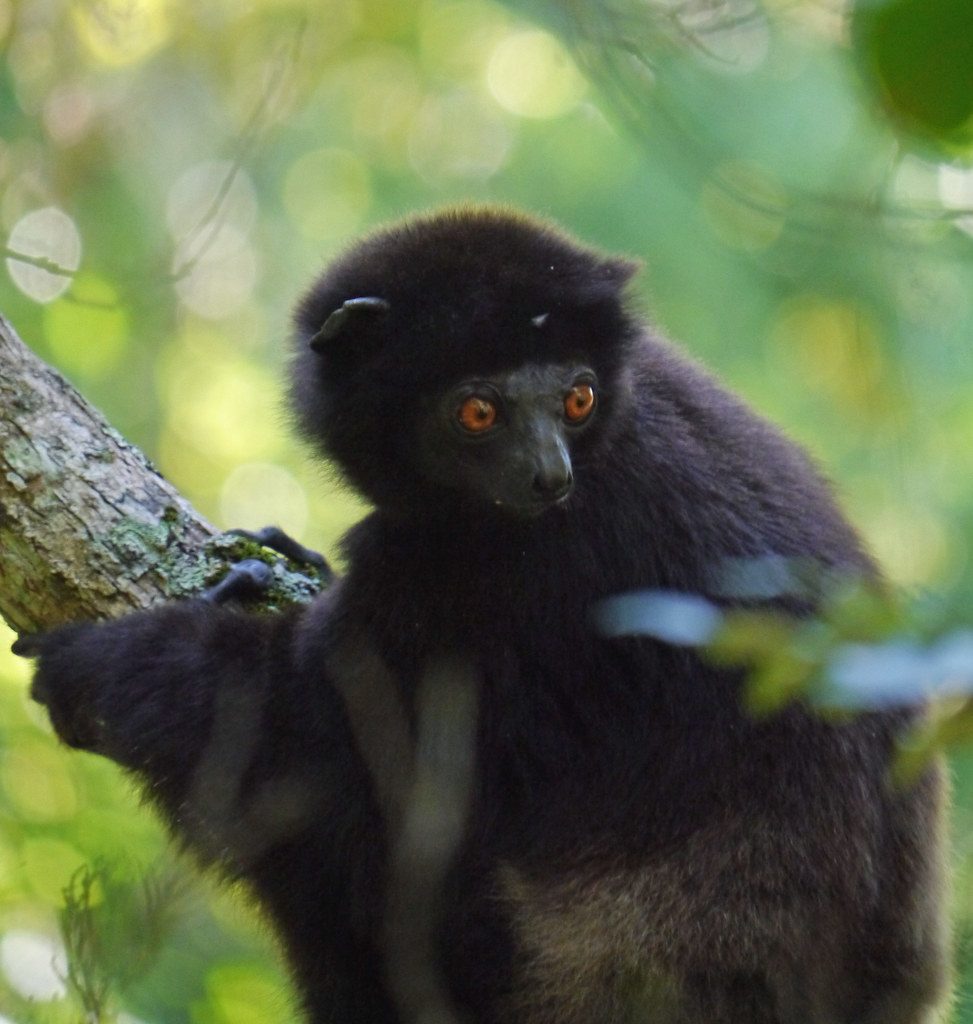
Propithecus edwardsi
Gilbert’s Lesser Bamboo Lemur (Hapalemur griseus ssp. gilberti) (EndangeredB1ab(i,iii))
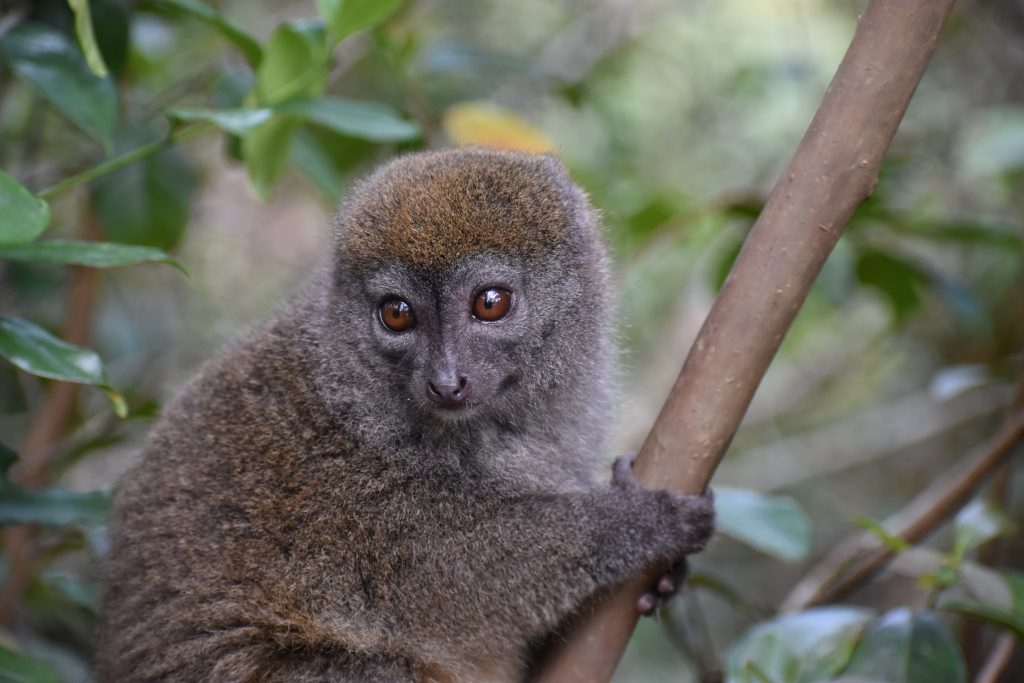
Hapalemur griseus ssp. gilberti
Link with the Lemur Conservation Strategy:
This project fits perfectly within the Lemur Conservation Strategy. Firstly, it targets lemur taxa that are categorized as being Critically Endangered, and in a listed action plan locality site – the COFAV. In fact, the Lemur Conservation Strategy lists the COFAV as being home to 21 lemur taxa of which 6 are critically endangered, 7 endangered, 4 vulnerable, 1 near threatened and 3 data deficient. As specified in the COFAV section (page 86 – 88), COFAV has the highest number of lemur species of any protected area in Madagascar – of which a disproportionate number are in elevated threat categories. However, scientific research on biodiversity has largely been limited to national parks.
The Lemur Conservation Strategy highlights the lack of data on lemur taxa, leading to a high percentage which are classified as Data Deficient on the IUCN Red List. This project will contribute to increasing and sharing data on lemur species in a very under-researched area: the COFAV. It will also directly support sustainable development and livelihoods improvements in local communities. As specified in the Strategy, multifaceted solutions to habitat loss are required.

Project Location:
The project area comprises 32,000 ha of the COFAV (which totals 314,186 ha) and includes the rainforest of 4 municipalities: – To the east: Ambolomadinika, Antodinga and Ankarimbelo (Ikongo district, Vatovavy Fitovinany region) – To the west: Ambohimahamasina (Ambalavao district, Haute Matsiatra region) It focuses on the areas around the 3 main footpaths crossing the rainforest corridor east-west.
Conservation problem
Information on threats to lemurs have been gathered by Ny Tanintsika’s community support field agents who have been using these rainforest paths at least twice monthly for over 10 years. Hapalemur aureus is most threatened at the project site by poaching, primarily for home consumption (the taste of its meat being largely appreciated by forest residents) and sale of meat (particularly in key settlements / snack points for walkers along the 3 main footpaths that cut east-west across the forest in the target area) but, on a lesser scale, for sale alive. This species is considered by locals as being particularly easy to catch in comparison to others such as Varecia variegate ssp. editorum which is wearier of people. The period when the most sightings of cooked lemur snacks have been made by Ny Tanintsika community support field agents is between October and December, which coincides with peoples’ ‘hungry season’ before the rice harvest in the area to the west of the forest, and is also generally when lemurs are more visible as it is the dry season. The poaching problem will be addressed through education and awareness-raising activities, a strengthening of forest management and governance, and development of alternative
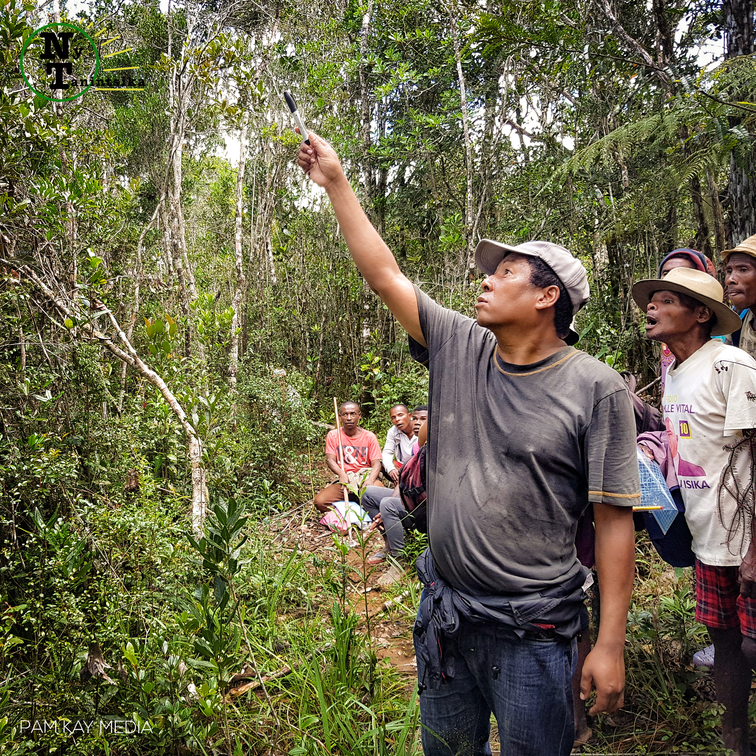
Section protein and income-generation sources for forest residents.
The second biggest threat to Hapalemur aureus and other primates in the target area is habitat loss, disturbance and deterioration as a result of in-migration into the forest (from the west, particularly for rice-farming in the valley floors and, from the east, particularly for swidden or ‘slash and burn’ agriculture) and insufficient controls on logging, deforestation and fires. Due to a lack of land tenure security and the proliferation of land conflicts around villages, occupation of forest land is often considered the ‘easy’ option due to weak controls (Toillier, Serpantié et al. 2011: 51), backed up by NT observation). Research in this area has also found low levels of knowledge about Madagascar’s wildlife laws in this area (Keane, Andriamahatsiaro et al. 2011). This project will address this through heightening stakeholder and local population awareness on legislation, boosting stakeholder communication and collaboration, and through strengthening local forest management and governance structures. Co-funding will provide support to promote communities’ land tenure security outside of forests.
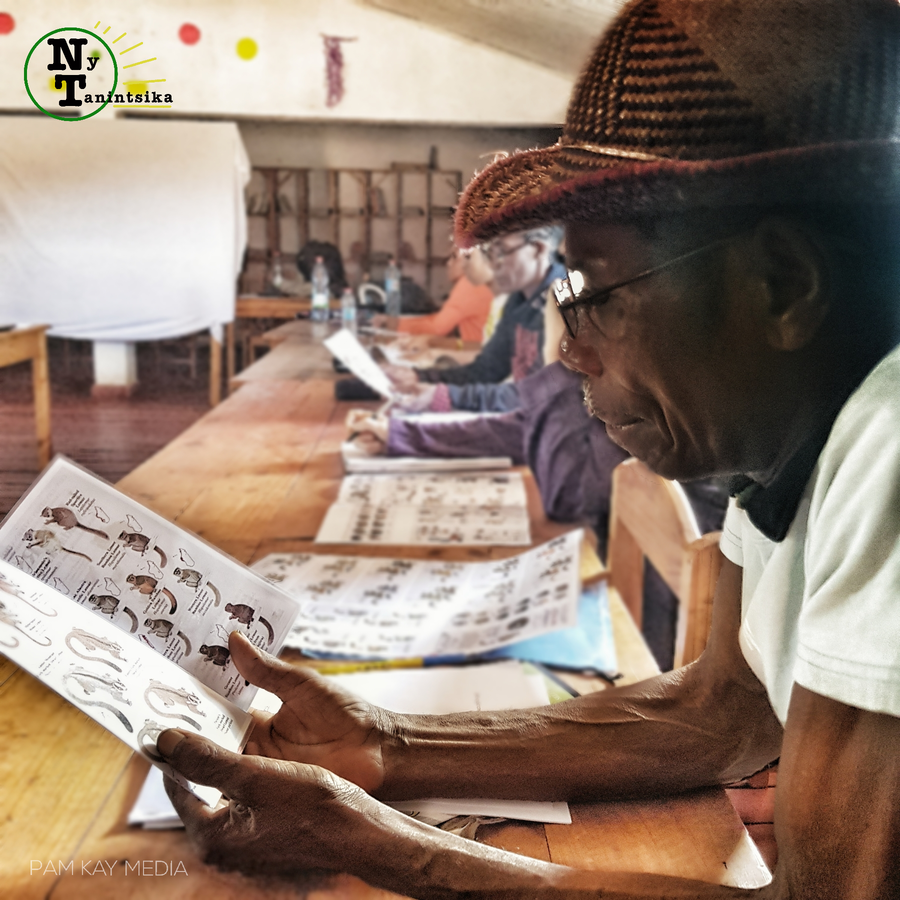
Forest inhabitants will become key partners in lemur conservation, participating in their monitoring and in improving the environment (for example through planting tree species liked by lemurs and restoring degraded parts of the forest to ensure habitat connectivity, as well as changing habits in relation to burning and land-use). In this way, forest inhabitants’ use of forests will become more sustainable and their existing agricultural land more productive and permanent (through adoption of agroforestry techniques for example, and support to fish-farming and chicken rearing initiatives). Whilst there are also threats from mining within the COFAV, these remain more localized to specific areas. However, improving forest governance, management and monitoring through the project will also contribute to addressing their problem.
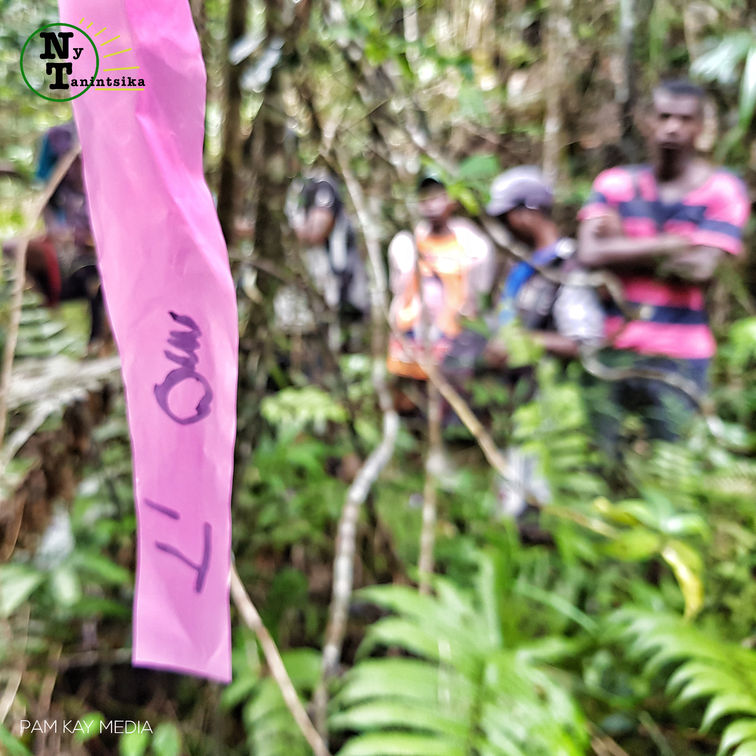
Photo Credit: Pam Kay Media
This project is funded by IUCN Save Our Species
